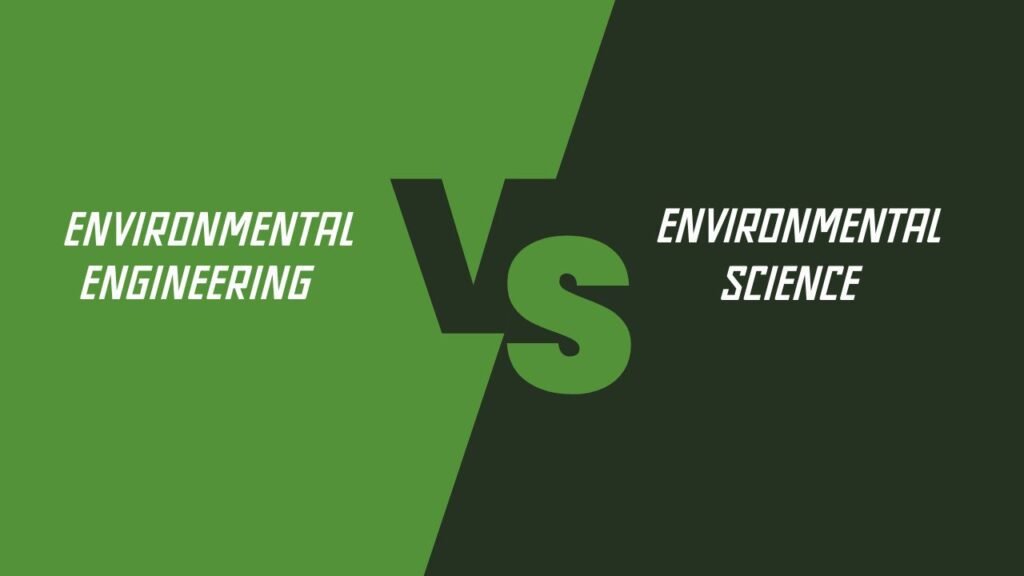Understanding Environmental Remediation: Meaning, Importance, and Solutions
Environmental remediation is a critical process that plays a pivotal role in safeguarding the health of our planet. From cleaning up contaminated soil and water to restoring ecosystems, it is an umbrella term for a range of solutions aimed at mitigating the impact of human activities on the environment. In this article, we will delve into the meaning, importance, and various solutions associated with environmental remediation.
Understanding the meaning of environmental remediation is the first step towards grasping its significance. It involves the removal or treatment of pollutants to restore environmental integrity and protect human health. By addressing issues such as industrial waste, oil spills, and chemical contamination, remediation ensures that natural resources can be utilized sustainably for future generations.
The importance of environmental remediation cannot be overstated. It helps prevent the spread of toxins, mitigates the negative impact on ecosystems, and ultimately contributes to a cleaner and healthier environment. From cleaning up brownfield sites to restoring wetlands and forests, remediation efforts are vital for achieving ecological balance.
In the following sections, we will explore various solutions employed in environmental remediation, including bioremediation, phytoremediation, and nanoremediation, among others. By understanding the processes and technologies involved, we can contribute to a greener and more sustainable future for our planet.

The importance of environmental remediation
Environmental remediation is of paramount importance in preserving the delicate balance of our ecosystems. As human activities continue to impact the environment, pollutants and contaminants are introduced into the air, soil, and water. These pollutants pose a threat to both the environment and human health, making remediation efforts essential.
One of the key benefits of environmental remediation is its ability to prevent the spread of toxins. By removing or treating pollutants, remediation helps contain the contamination to a specific area, reducing the risk of further contamination in surrounding ecosystems. This containment is crucial in preventing the pollutants from spreading and causing long-term damage.
Another important aspect of environmental remediation is its role in mitigating the negative impact on ecosystems. Many pollutants have detrimental effects on plants, animals, and microorganisms, disrupting the delicate balance of ecosystems. By removing or reducing the concentration of pollutants, remediation efforts contribute to the restoration of these ecosystems, allowing them to thrive once again.
Furthermore, environmental remediation is crucial for maintaining a cleaner and healthier environment. By addressing issues such as industrial waste, oil spills, and chemical contamination, it ensures that natural resources can be utilized sustainably for future generations. By cleaning up contaminated sites and restoring them to their natural state, remediation efforts contribute to a safer and more sustainable world.

Common pollutants and contaminants
Understanding the different types of pollutants and contaminants is crucial in developing effective environmental remediation strategies. Pollutants can be categorized into various groups, including organic and inorganic compounds, heavy metals, and radioactive materials.
Organic compounds are a common type of pollutant found in soil and water. These compounds include petroleum hydrocarbons, pesticides, and solvents. They can persist in the environment for a long time and have detrimental effects on both human health and ecosystems.
Inorganic compounds, such as heavy metals like lead, mercury, and cadmium, are another group of pollutants commonly found in the environment. These metals are toxic and can accumulate in the food chain, posing a threat to both wildlife and humans.
Radioactive materials, such as uranium and radon, are also significant pollutants that require remediation efforts. These materials can contaminate soil and water, leading to long-term health risks.
Chemical spills, oil spills, and industrial waste are some of the common sources of pollutants. Understanding the sources and characteristics of pollutants is crucial in developing effective remediation strategies.

Methods of environmental remediation
Environmental remediation employs various methods and technologies to remove or treat pollutants and contaminants. These methods can be broadly classified into physical, chemical, and biological techniques.
Physical remediation techniques involve physically removing or containing the pollutants. Excavation is a common physical remediation technique used to remove contaminated soil, while containment involves isolating the contaminated area to prevent further spread of pollutants.
Chemical remediation techniques involve the use of chemicals to break down or neutralize pollutants. For example, chemical oxidation is a technique that uses oxidizing agents to convert organic pollutants into less harmful compounds. Another chemical remediation technique is stabilization, which involves adding chemicals to immobilize contaminants and prevent their movement.
Biological remediation techniques, also known as bioremediation, utilize microorganisms and plants to degrade or remove pollutants. Microorganisms can break down organic compounds through metabolic processes, while plants can absorb and accumulate contaminants through a process called phytoremediation.
Phytoremediation is a particularly effective and sustainable method of environmental remediation. Certain plant species have the ability to absorb and accumulate pollutants in their tissues, effectively removing them from the soil or water. This process can be used to treat contaminated water bodies, soil, and even air.
Nanoremediation is an emerging field that utilizes nanoparticles to remove or treat pollutants. These nanoparticles can be designed to specifically target and bind to pollutants, facilitating their removal or degradation. Nanoremediation shows promise in treating contaminants that are difficult to remove using traditional methods.

Site assessment and remediation planning
Before implementing any remediation project, a thorough site assessment is essential. Site assessment involves conducting a comprehensive investigation to understand the extent and nature of contamination. This includes collecting samples, analyzing data, and mapping the contaminated areas.
Site assessment helps in identifying the sources of contamination, evaluating the risks associated with the contaminants, and determining the appropriate remediation techniques. It provides a solid foundation for developing a remediation plan tailored to the specific site and contaminants.
Remediation planning involves developing a detailed roadmap for implementing the chosen remediation techniques. It includes considerations such as the timeline, budget, and logistics of the project. A well-designed remediation plan takes into account the unique characteristics of the site and aims to achieve effective and sustainable remediation.

Implementing environmental remediation projects
Once the site assessment and remediation planning are complete, the implementation phase of an environmental remediation project begins. This phase involves executing the planned remediation techniques and closely monitoring the progress.
Implementing environmental remediation projects requires coordination among various stakeholders, including environmental scientists, engineers, and regulatory bodies. It is important to adhere to environmental regulations and guidelines throughout the process to ensure the safety and effectiveness of the remediation efforts.
The implementation phase may involve excavation, the installation of remediation systems, or the introduction of microorganisms or plants for bioremediation or phytoremediation. The specific techniques chosen depend on the nature and extent of contamination, as well as the desired outcome of the remediation project.

Monitoring and evaluating the effectiveness of remediation efforts
Monitoring and evaluating the effectiveness of remediation efforts is a crucial step in ensuring the success of a project. This involves regular sampling and analysis to track the progress and determine if the chosen remediation techniques are achieving the desired results.
Monitoring can involve measuring the concentration of contaminants in soil, water, or air, as well as monitoring the recovery of ecosystems. This data helps in assessing the effectiveness of the remediation techniques and making any necessary adjustments to the project.
Evaluation of the remediation efforts involves comparing the results with predetermined goals and objectives. It helps in determining if the project has met its intended outcomes and provides valuable insights for future remediation projects.
Case studies of successful environmental remediation projects
Examining successful environmental remediation projects provides valuable insights into the effectiveness of various techniques. One such case study is the remediation of the Love Canal in Niagara Falls, New York. The site, which was contaminated with industrial waste, was successfully remediated through a combination of excavation and containment techniques. The project led to the relocation of residents and the restoration of the area.
Another notable case study is the remediation of the Exxon Valdez oil spill in Alaska. This environmental disaster resulted in significant damage to marine ecosystems. The cleanup efforts involved physical techniques such as the use of booms and skimmers to contain and remove the spilled oil. Despite the challenges, the project successfully mitigated the impact on the environment.
These case studies highlight the importance of effective planning, coordination, and monitoring in achieving successful environmental remediation.
Future trends and innovations in environmental remediation
As technology and scientific understanding continue to advance, new trends and innovations are emerging in the field of environmental remediation. One such trend is the use of advanced sensors and monitoring systems to enhance the accuracy and efficiency of monitoring efforts. These technologies provide real-time data and enable proactive decision-making to optimize remediation processes.
Another trend is the integration of artificial intelligence and machine learning algorithms in environmental remediation. These technologies can analyze large datasets and identify patterns, helping in the prediction and prevention of environmental contamination. They can also assist in optimizing the selection and implementation of remediation techniques.
Furthermore, there is growing interest in the development of sustainable and nature-based remediation solutions. This includes the use of green infrastructure, such as constructed wetlands and biofiltration systems, to treat contaminated water. These nature-based solutions offer multiple benefits, including habitat creation, carbon sequestration, and improved water quality.
The future of environmental remediation lies in the continued exploration and integration of innovative technologies and sustainable practices.

Conclusion: The role of individuals and organizations in environmental remediation
Environmental remediation is a complex and multifaceted process that requires the collective efforts of individuals, organizations, and governments. By understanding the meaning, importance, and various solutions associated with environmental remediation, we can contribute to a greener and more sustainable future for our planet.
Individuals can play a role by adopting environmentally conscious practices in their daily lives, such as reducing waste, conserving energy, and supporting sustainable initiatives. Organizations can contribute by implementing responsible environmental practices, investing in research and development of innovative remediation technologies, and collaborating with stakeholders to address environmental challenges.
Government agencies and regulatory bodies play a crucial role in developing and enforcing environmental regulations and guidelines. They can provide support and incentives for environmental remediation projects, as well as ensure compliance with environmental standards.
By working together, we can make a significant impact in preserving the health of our planet through effective environmental remediation. It is our collective responsibility to protect and restore the environment for future generations.


